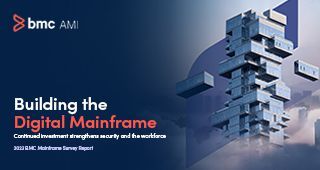In John Steinbeck’s novel, The Grapes of Wrath, he called Route 66, a well-known United States highway, “The Mother Road.” In the novel, it was the path the Joad family took from the Dust Bowl state of Oklahoma to the state of California. Route 66 still survives in many places, but Interstate 40 has replaced a large segment of it and the roadway was decommissioned in 1985. While Route 66 was an innovation that stitched the country together, it was itself replaced.
What caused this? Route 66 partially solved the problem of routing—if the signs still said “66,” you knew you were on the right road. You still had to pay attention when there where shifts in the road, but you had some help. What it didn’t solve was slowdowns and stops in the small towns and larger cities along the way. These all added up to a long journey.
The interstate highways like I-55, I-44, and I-40 that replaced it, often in parallel, offered a way to avoid any slowdowns or stops. They eased navigation by limiting choices and distractions. They were also safer. While Route 66 may be a choice for a fun, long trip, you take the interstate highways when you need to get to the west coast fast.
When looking at mainframe development, I see many organizations still stuck in Route 66 mode. They have manual processes with slowdowns and stops along the way. There could be a clearly defined path to go from ideation to production, and developers could take pride that it is better than it was before. But mainframe development isn’t what it could be. There are alternative, parallel paths that will eliminate the stops and slowdowns.
Here are some ways to get your mainframe development onto the interstate:
- Get a map—Lay out your processes. What is your route from ideation to delivery? By laying it out, you can start to look at the procedures you have in place and the tools that support them. The chart located here can help you.
- Examine slowdowns—Starting with your map, look for places where there is a handoff, or a manual process, and seek to automate it. Look at places where there is a check or a human involved, and determine if that is really needed. If it is, what could be done to speed it up? Is the proper information available? For example, you could use automated code quality checks to speed code review.
- Build bridges and better routes—Just as Route 66 was altered over time to make it flow better with new bridges and routes, you can learn about the technologies that can assist you. For example, look for Webhooks and REST APIs for your current products. A great resource is the BMC Mainframe DevOps page.
- Initiate automated pipelines—In the same way that interstates were built and opened up in sections, you can also open up your pipelines one process at a time. You don’t have to wait for it to all be complete before you can begin to benefit. Focus on areas of greater benefit first, then link them. Setting up a whole interstate must have been a daunting process, but the route was planned, and then built in sections. You should do the same.
You can guide your teams to a new alternative parallel path that will eliminate the stops and slowdowns. Once you have established your modern, automated processes, you will continue to use them to provide quality solutions quickly to your users. The old ways will, like Route 66, only be a discussion point for nostalgia.







